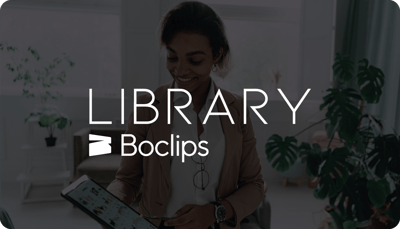With the world of educational video changing, growing, and developing all the time, it’s important to reflect on its impact as a tool. When it comes to the classroom, it’s helpful to investigate how video content can be refined to maximize learning gains. Can educational videos be made, edited, or presented in new ways that make information more accessible and easier to retain? Let’s take a look at two different studies that answer this question.
In August of 2022, the Association for Educational Communications & Technology published a study entitled “Can videos affect learning outcomes? Evidence from an actual learning environment” that sought to measure what impact multimedia lessons had on the learning gains of over 500 first-year economic students at an Australian university. To do this, researchers constructed two ~30-minute multi-media presentations adapted from lectures students had received a week prior. The presentations did not differ in content from those lectures, nor did they add or subtract any information. Aside from including video content, these multimedia lectures presented information visually with narration and explanation by the presenter adding context to what students saw. Crucially, there was no text added to the visual media which allowed greater focus and easier information processing for viewers. The exam performance of the student population who watched these multimedia presentations was compared to the performance of the student population who did not, which allowed the impact to be seen more clearly.
The results were quite encouraging. Researchers found that the students who viewed the multimedia presentations experienced a higher probability of correctly answering questions on a mid-term exam and saw a high statistical improvement in their procedural knowledge. As the study notes, “These are highly desirable learning outcomes for instructors, particularly as online learning becomes more widespread.” The overall takeaway from this study is that video-supported lessons can lead to better academic performance, especially regarding exam performance and procedural knowledge. This lays a foundational understanding of how educational videos can support learners to new heights.
With this understanding established, we can pivot to a new question: how can classroom videos be refined or optimized to maximize those learning gains? In September of 2022, the scholarly journal Humanities and Social Sciences Communications published a study entitled “The impact of short videos on student performance in an online-flipped college engineering course,” in which researchers studied the effects of educational videos on student performance. Lectures were pre-recorded as ~55-minute videos or roughly the length of one college course class meeting. One student population, referred to as the “long-video group,” received these full-length videos in their entirety. A second student population, referred to as the “short-video group,” received shortened clips of the long video that ran for an average of 8 minutes each. To measure the impact of video length on academic performance, the exam scores for both student populations were analyzed and compared. So what did this study find?
Researchers found that shorter videos resulted in a greater level of student engagement. The students of the short-video group experienced an engagement level 24.7% higher than that of the long-video group. This indicates that shorter videos lead to much higher engagement than what’s seen with longer videos. There’s a similar trend seen in the exam performance of each student group. The short-video group experienced a 7.4% higher median score and a 9% higher average score than those of the long-video group. Additionally, the exam scores from the short-video group showed a smaller standard deviation than the long-video group, which may indicate that students who watched a shorter video performed more consistently on exams. Taken together, these findings show that shorter educational videos are not only more engaging for students, but they also lead to more consistently strong academic performances.
Both of these studies point to the same phenomenon: students engage with lesson content best when they’re given quality educational videos. Those videos are the most engaging when they’re presented as shorter clips. The exam performance indicates that students given short educational video content are more able to retain their knowledge and access it effectively. In essence, students perform better when they’re given Ed-Ready videos like the ones found in the Boclips.
Try Boclips Classroom free for 60 days to share videos directly with students in a distraction-free, ad-free, safe, YouTube alternative.
With over 2.2 million videos from over 550 trusted content partners, the Boclips is here for educators who want to take their students to the next level and keep their classrooms aligned with the rapidly changing world.
Tani, M., Manuguerra, M. & Khan, S. Can videos affect learning outcomes? Evidence from an actual learning environment. Education Tech Research Dev 70, 1675–1693 (2022). https://doi.org/10.1007/s11423-022-10147-3
Zhu, J., Yuan, H., Zhang, Q., Huang, P. H., Wang, Y., Duan, S., Lei, M., Lim, E. G., & Song, P. (2022). The impact of short videos on student performance in an online-flipped college engineering course. Humanities & social sciences communications, 9(1), 327. https://doi.org/10.1057/s41599-022-01355-6
Boclips
Boclips is on a mission to make learning more captivating with video with an easier, safer way to access videos from the world’s leading video producers.
- #Classroom
- #Video in Digital Learning
- #Educational Videos
- #Tips for Using Video
- #Video Content Partners
- #Boclips for Publishers
- #Issues in Education
- #Educational Videos by Subject Area
- #News and Announcements
- #Events & Holidays
- #Video and Teaching Tools
- #Teaching Methodologies
- #Education Videos
- #Video and Digital Literacy
- #Short Educational Videos
- #Instructional Design
- #Multimodal Learning
- #Video and Student Safety
- #Accessibility in Education
-3.png?width=390&height=223&name=Untitled%20design%20(2)-3.png)


.png?width=1152&height=660&name=Copy%20of%20Untitled%20Design%20(1).png)



